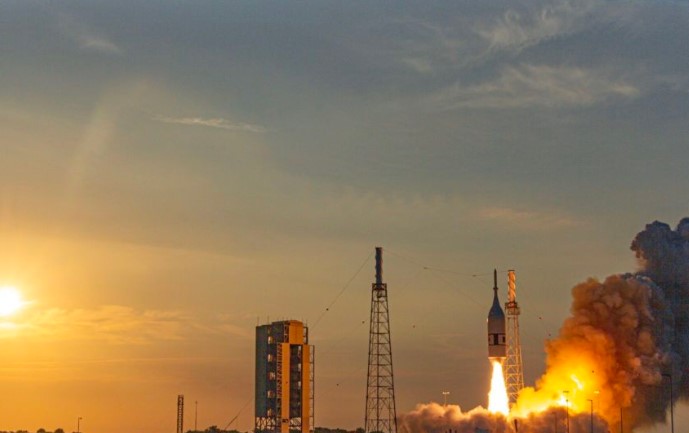
It went fast. Early on Tuesday morning, a former Peacekeeper missile lofted a boilerplate Orion spacecraft to an altitude just shy of 10km before a powerful escape motor fired. Amid the smoke, the escape system pulled the NASA spacecraft rapidly away from the Peacekeeper booster. The entire test lasted 3 minutes and 13 seconds.
“Everything we’ve seen so far looks great,” said Orion Program Manager Mark Kirasich, about two hours after the test following a very preliminary review of data.
In many ways, this was an odd-looking test. The stubby Peacekeeper missile looked nothing like a tall, brawny rocket—such as the Space Launch System or the Delta IV Heavy—capable of launching Orion into space. After the escape system fired and Orion was released, the vehicle tumbled and plummeted into the Atlantic Ocean in what was less than a heartwarming scene.
However, it was a successful test. At the time of maximum dynamic pressure during a launch, when a rocket is still accelerating but the atmosphere remains relatively thick, the launch abort system proved capable of pulling Orion away from its booster, reorienting the spacecraft, and then releasing it. This was the sole purpose of the test on Tuesday.
Why didn’t the agency add parachutes to ensure that Orion could make a safe and soft landing in the ocean? Because the goal was to conduct a specific test, according to Kirasich. “We simplified the test article,” he said. “We wanted to get this test done as early and as quickly as possible. It was all about the launch abort system today. By all accounts, it was magnificent.” NASA has, in fact, conducted nearly four dozen tests of Orion’s parachute system already.
Mass and schedule
In truth, the problem with Orion has never really been its technical performance—by all accounts, NASA and Lockheed Martin are building a capable, robust, safe vehicle for humans to return to deep space in the early to mid-2020s. Rather, the issue is one of mass, budget, time, and mission. In terms of mass, Orion is a very heavy vehicle with its launch escape system, about 26 tons. This requires a very large rocket to launch it even into low-Earth orbit, let alone lunar orbit.
Then there is the lack of a mission. Since NASA first solicited contracts for a deep space capsule in 2005 and awarded the contract to Lockheed a year later, the space agency has spent $16 billion on Orion. It seems unlikely that the spacecraft will fulfill its intended purpose, carrying humans into deep space and back, before 2022 or 2023. If that plays out, the development process will have stretched across nearly two decades.
This is not because NASA or Lockheed Martin are bad at building spacecraft—they’re not. This is mainly because NASA has lacked a clear, sustained purpose to actually use Orion. That may be changing with the Artemis program to return humans to the Moon, but so far Congress has yet to acquiesce to the Trump administration’s desire for more funding to accelerate a human lunar return by 2024. And so Orion tests, and waits, and tests some more.





























